AI led drug discovery experience
The use of AI in drug discovery dates back several decades. Initially, AI was used for predicting bioactivity and identifying potential drug candidates. With recent advancements in machine learning and deep learning, AI is now used for predicting toxicity and pharmacokinetics, designing and optimizing drug molecules, and more.
In today's era, the drug discovery scientists in our client's team devote an inequitable chunk of their time compiling information from disparate origins and readying it for examination.
As the design and strategy lead, I spearheaded an ambitious project for one of the world's largest pharmaceutical companies. The project aimed to introduce a new AI technology that effectively supports and boosts the confidence of discovery scientists in generating well-informed hypotheses for gene identification in the context of diseases.
Confidential information, including the company name, roles, and the detailed outcomes including research ouputs, system/service blueprints and UI/UX design under discussion, has been omitted and obscured in this case study in compliance with the non-disclosure agreement.

The challenge
Extracting meaning from millions of disparate data points
Our objective for the project was to revamp the process of drug discovery for research scientists by leveraging our newly developed AI technology at the innovation center.
Our high level goal was to comprehend the impact of integrating this new AI technology on the drug discovery process across the organization, and subsequently create a user-friendly experience that would enable scientists to concentrate on their research instead of grappling with intricate technologies or managerial duties.
The approach and the objectives
Multidisciplinary understanding
The project team comprises 20+ members, including designers, data scientists, developers, and strategists. The project duration was for 10 months, and the client is a large pharmaceutical company. Additionally, the client has a dedicated team of 10 individuals working on the project.
Our multidisciplinary team worked across four workstreams to achieve the following outcomes.

Insight study
Build a common understanding of the client and technology needs. Generate insights to discover where the solution will bring value spanning from end user upto C-suite.

Technology experiment
Conduct a series of technology experiments to confirm the drug discovery approach and evaluate the impact of any incremental technological changes on the strategic, operational, and tactical decision-making process of end-users.

Design & build
Design and build for a solution that covers both physical and digital experiences.

Business & Strategy
Develop an understanding of how the solution will fit within the ecosystem of service providers, data vendors, and authorities.
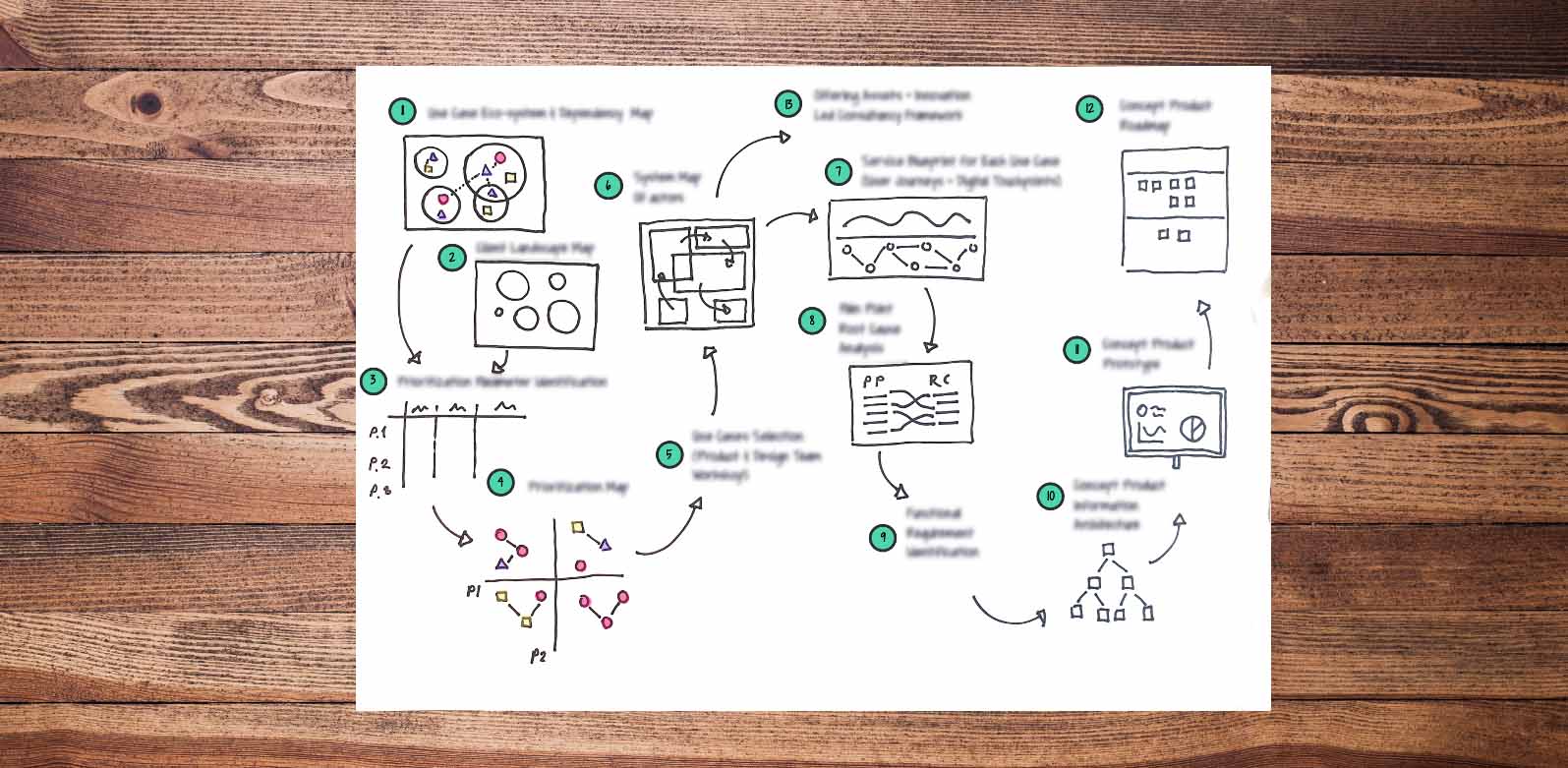
Discovery
Scientist Empowerment through Human-Centered Design: A Research Phase for Drug Discovery Processes
To begin the project, two war rooms were constructed - one at the client's location and another at the innovation center. The initial task at hand was to swiftly map out the recurring tasks of all actors involved in drug discovery. Our scope extended beyond discovery research, encompassing biologists, genomics scientists, chemists, oncologists, and safety scientists.
For a month, the team performed research on-site at clients' laboratories. The workshop, attended by over 16 participants, comprised group sessions, one-to-one interviews, and shadowing. The primary result of this exercise was a blueprint detailing the present working conditions of the Discovery Scientists.


Deeper Insights
Generating insights by merging the qualitative and the quantitave data
During the time we conducted workshops, interviews, and observational studies, we also conducted a network analysis within the organization.
In network analysis, we conducted a survey to gather information about the individuals with whom the participants interacted the most within their organization, as well as the tools and data sources that they regularly used in their daily work. The purpose of this survey was to gain a better understanding of the primary communication channels that were currently in place, which helped inform the design of a support tool for the target discovery process. By asking a few simple questions, we were able to gather valuable insights that allowed us to create a tool that better met the needs of users like the participants.
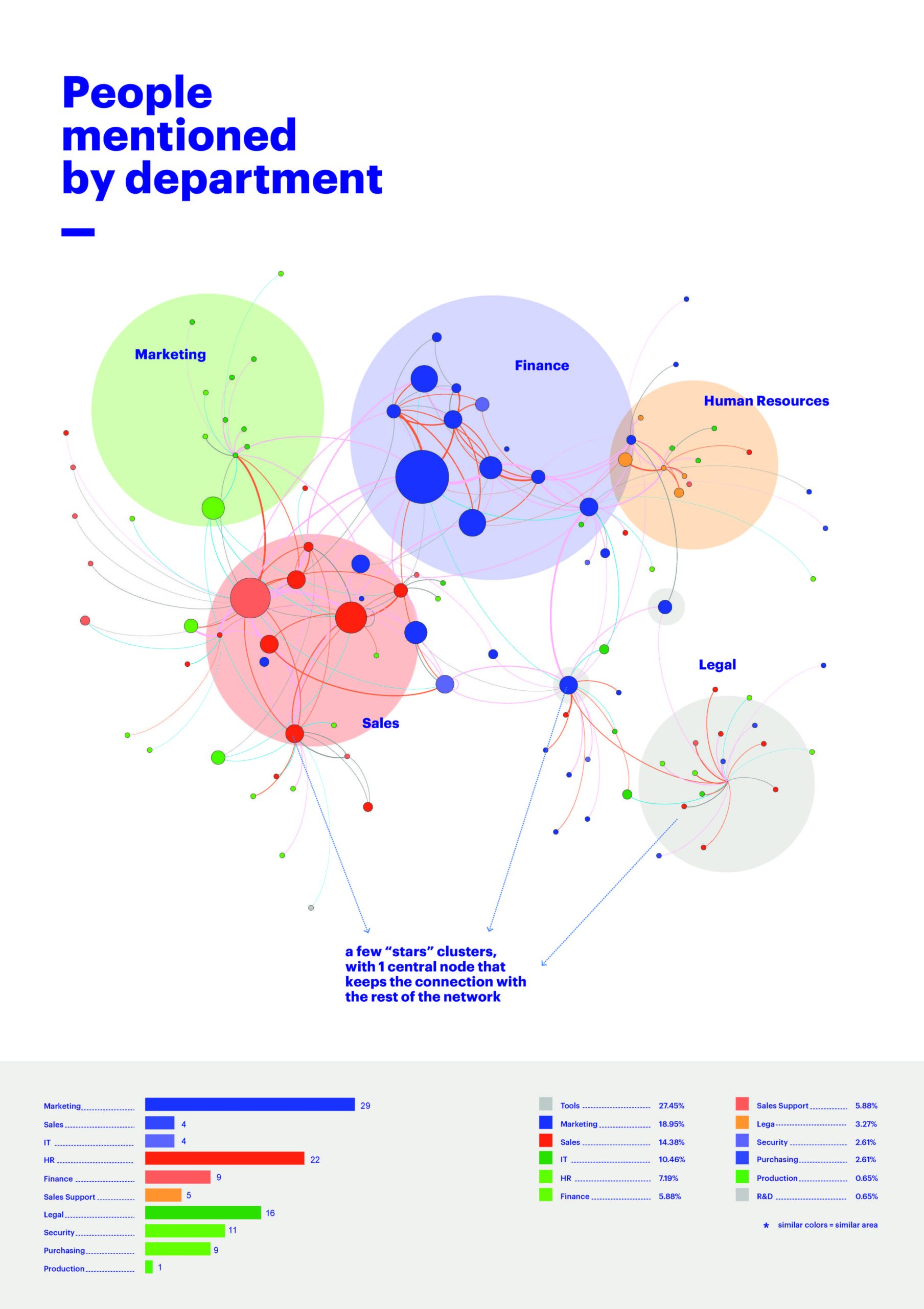

Mapping the as-is
It is more complicated than it initially appears, and it was already quite complicated to begin with
We conducted an insight study to determine the underlying reasons for the difficulties that scientists were facing. Our research revealed that addressing the challenges would require more than just the implementation of the AI tool we are introducing. While some root causes are related to technology, others are linked to workflows, technical infrastructure, and policies.

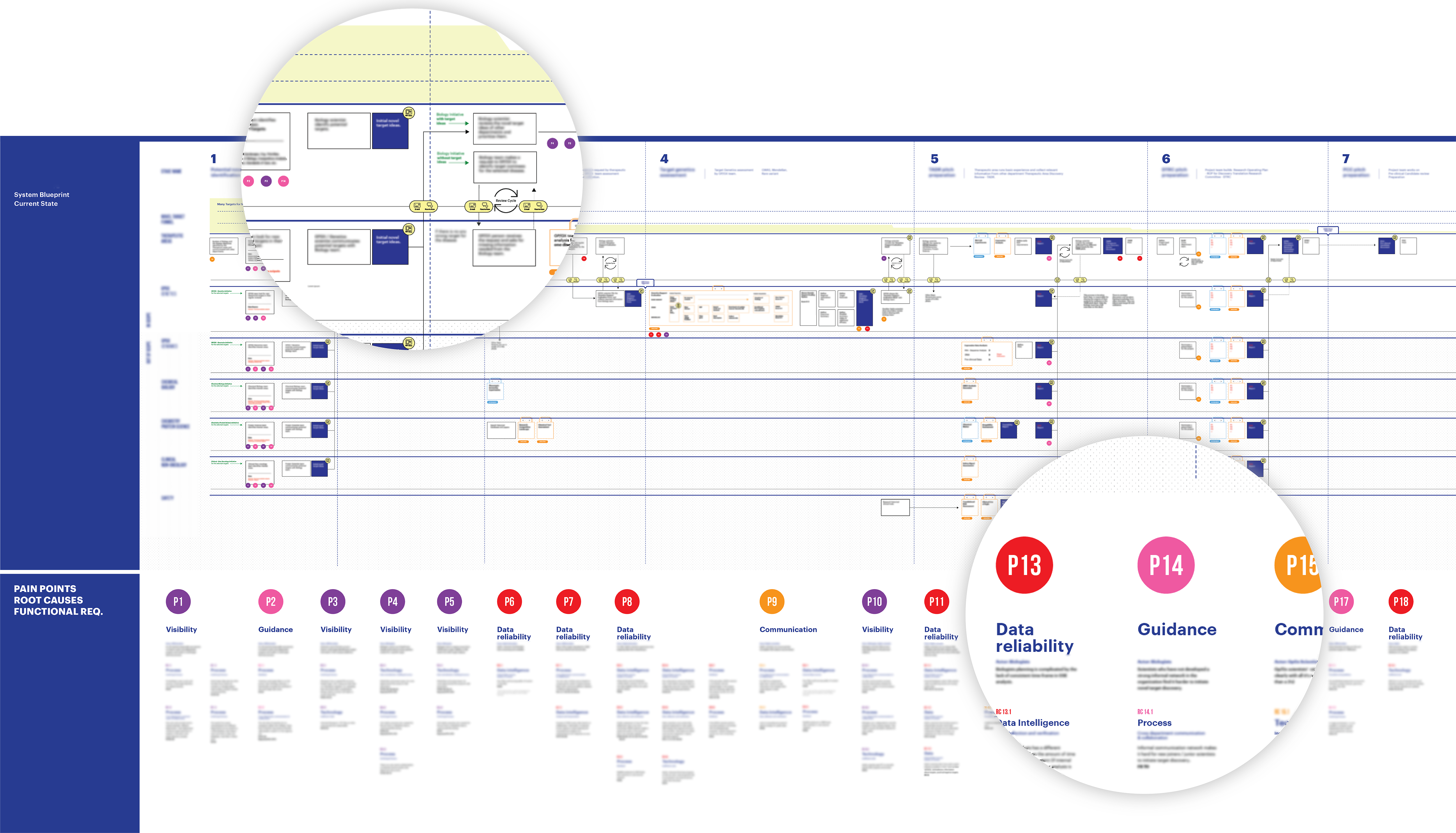
Reframing the problem
A pain point is a symptom; the root cause is the disease. To truly heal, you must address both
During our synthesis process, we defined any problem experienced by an end user as a pain point. These pain points must be user-centric and general. To identify root causes, we followed a different approach, whereby a root cause is always system-centric (process, technology, policy, etc.) and specific.
Our analysis of the current state system map revealed that some root causes are connected to multiple pain points, which aided us in prioritizing the development of our solution.
In general, data driven drug discovery involves several key areas that must be carefully addressed to ensure accurate and effective results. One critical aspect is data quality, which requires the accuracy and completeness of the data used to be verified. In addition, drug discovery scientists must possess the necessary expertise to interpret the outputs generated from Insilico data science experiments, as misinterpretation can lead to incorrect conclusions and wasted resources.
Another key consideration is regulatory approval, as data science may not be considered reliable by regulatory bodies, creating barriers to drug approval.
Finally, interdisciplinary collaboration is crucial for successful drug discovery, as effective communication and collaboration between researchers from different fields are necessary to achieve desired outcomes.

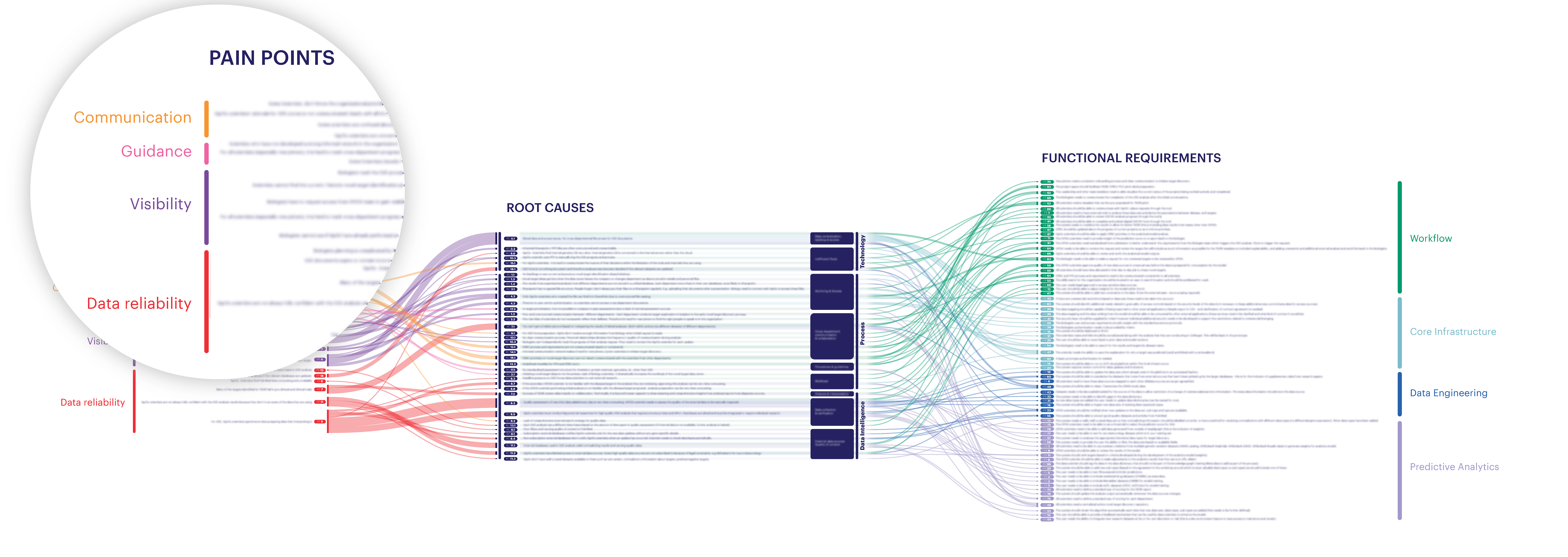
Introducing our solution
System level re-design including workflows, technology and policies
Our team introduced human-centered design into the laboratories to aid scientists in understanding and utilizing AI tools. We worked with end-users to design interactions and visualizations that catered to their needs. However, during our research, we realized that any introduction of technology would have an impact on the wider process. We discovered that there were issues beyond target discovery that could affect the success of our solution.
To tackle this challenge, we created a blueprint of the entire drug discovery process to understand the organization's structure. We highlighted that target discovery was just one part of the overall challenge of bringing new drugs to market. By mapping the entire system, we identified that each process had its own decision and validation cycles. Speeding up protein target discovery was just one cycle in this system. To achieve the greatest value for our client, we needed to get all cycles to move faster in harmony. This broader perspective allowed us to reframe the challenge with the client and focus on developing a new technological infrastructure that could support communication between teams across the process.
User experience in 5 steps
Putting human collaboration at the heart of experience
The solution primarily targets discovery scientists, but biologists and professionals in other therapeutic areas will also have access to the tool, albeit with limited use as it is not their main focus in their daily work. Our solution's strength lies not only in the technology it offers but also in its workflow management capabilities, which give scientists complete control over their research and documentation.
The tool and the new lab experience facilitates collaboration across departments, simplifying the complex work that requires the input of numerous scientists from different fields. It provides a comprehensive overview of the research on the selected disease and genes within the organization.
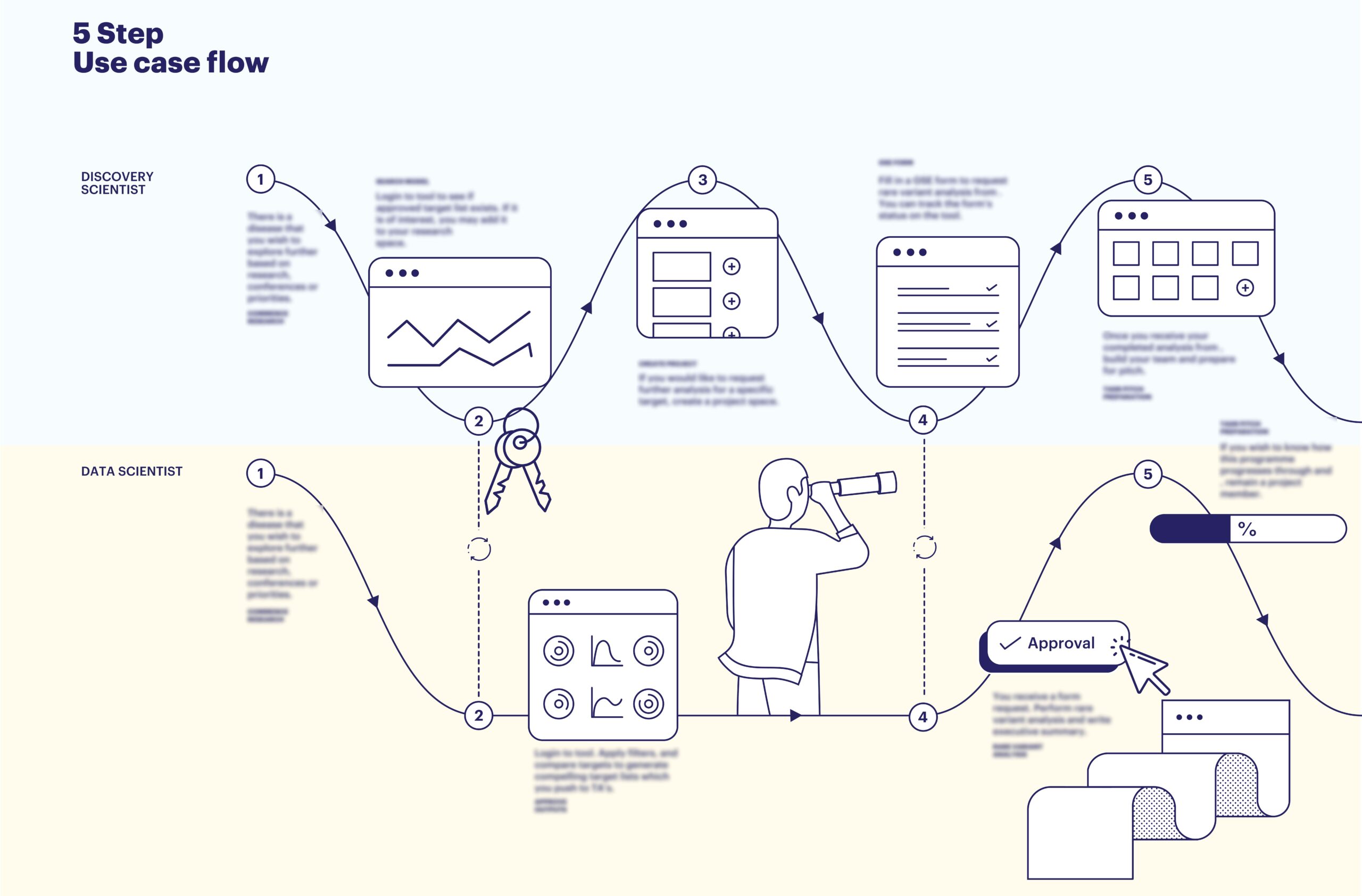

User Interface
A re-imagined digital lab experience
In the user interface, we carefully considered the key principles that are essential to a successful experience. After conducting research and analysis, we determined that transparency is critical, ensuring that the right information is presented to the user at the right time and always considering their context.
We also recognized the importance of guidance, offering step-by-step support throughout all critical pain points in the user's journey. To ensure flexibility, we included customizable actions that can be tailored to meet the specific needs of each user. Finally, we placed a strong emphasis on consistency, maintaining clear communication and using the same tone and language across all aspects and phases of the interface.
In addition to these design principles, we carefully considered the technological characteristics required for an effective tool. We recognized that the system must be able to scale to model millions of data points for hundreds of thousands of entities. Furthermore, it must be explainable, providing clear explanations and reasoning behind its decisions and actions.
Roadmap
The future is computational drug discovery
Our interaction with the customer led to new discussions and investment opportunities in in silico tool skills, such data and AI capabilities, while also assessing process, governance models, and staff skills to reap the benefits of in silico approaches.
To foster cooperation among various stakeholders and refine project priorities, the design team employed the strategic roadmapping workshops, which entailed organizing functional requirements into prototype, MVP, vision, and discussion categories. By participating in this endeavor, they managed to jointly create a roadmap, pinpoint new functional requirements, and transform static spreadsheets into interactive tools to efficiently examine and prioritize information. The strategic roadmapping workshops aided the project team in achieving productive conversations and ensuring the success of the R&D IT leaders' investments in in silico tool skills.
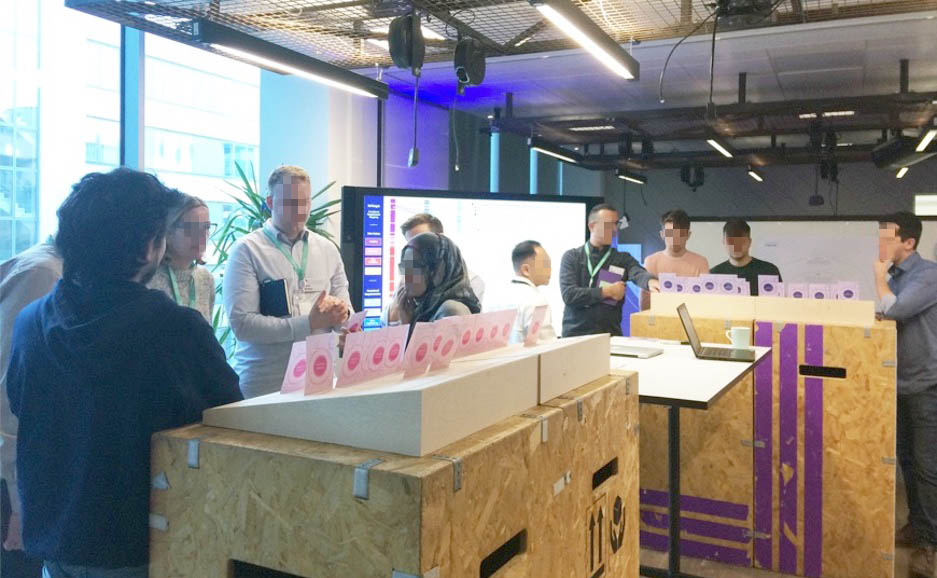

Website design and content © 2023 Firat Toroglu